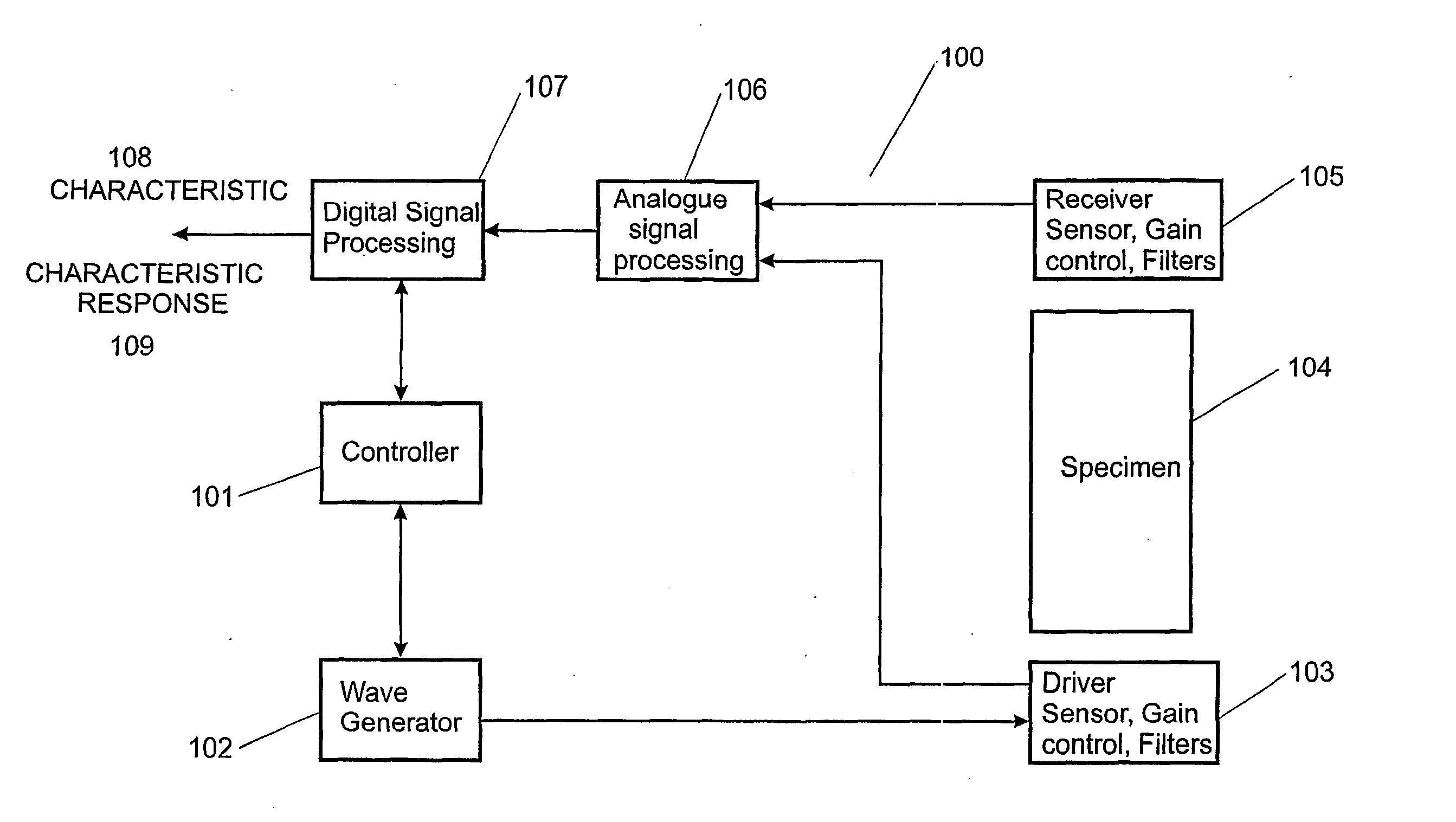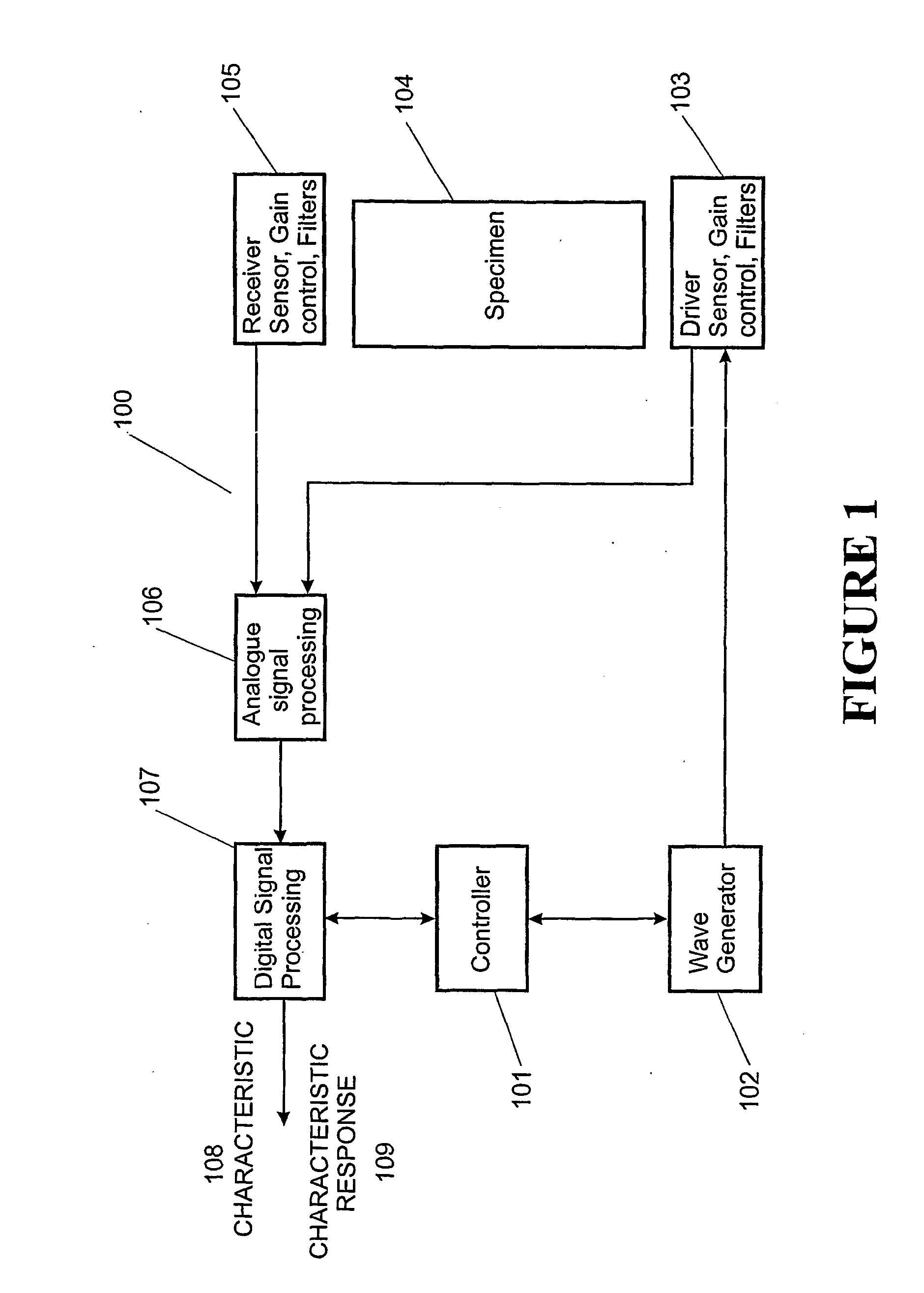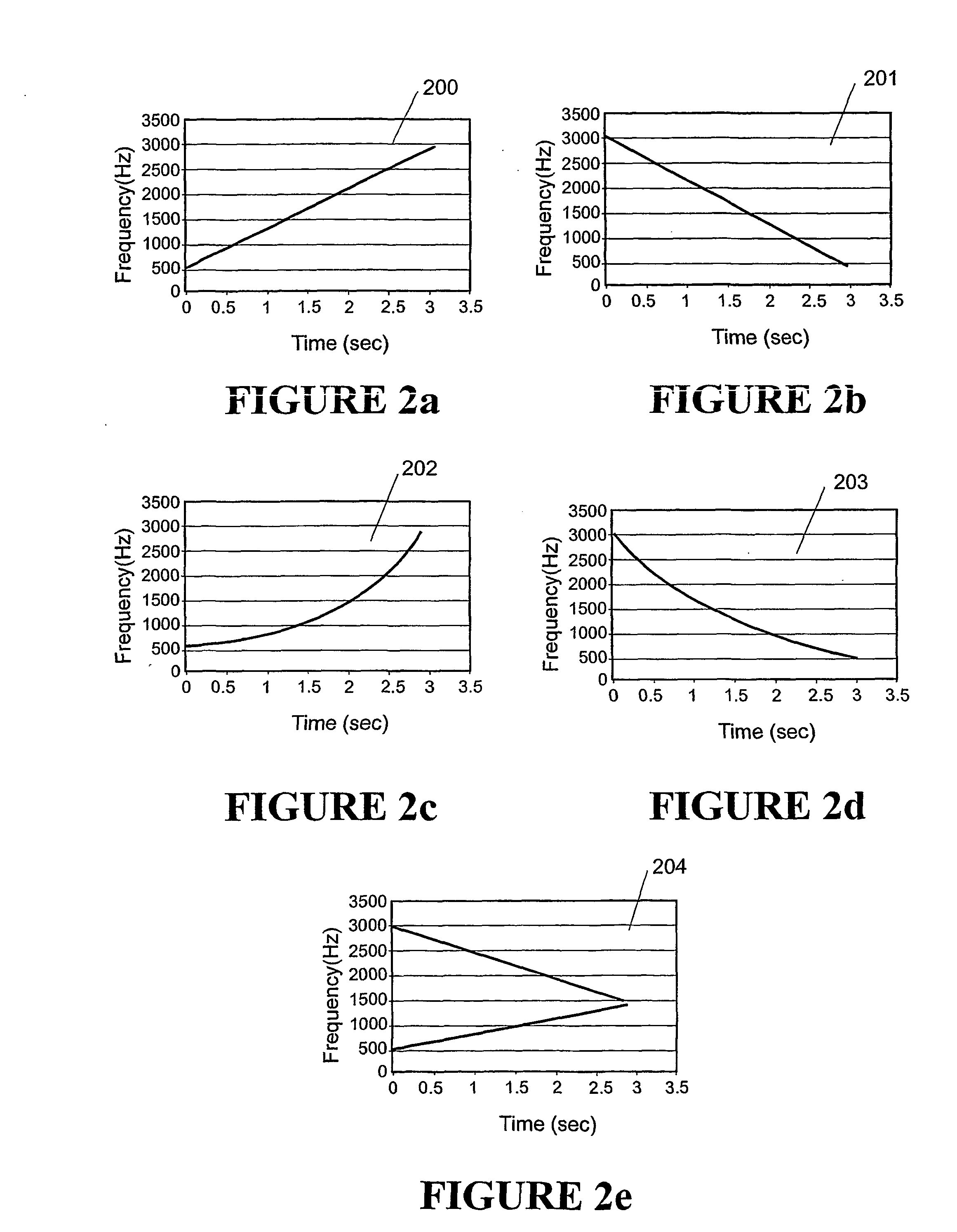Method and apparatus for assessing or predicting characteristics of wood or other wooden materials
a technology of characteristics and methods, applied in the direction of instruments, heat measurement, specific gravity measurement, etc., can solve the problems of reducing accuracy, prone to noise, and ambiguity in resonance techniques, so as to optimize the use of specimens
- Summary
- Abstract
- Description
- Claims
- Application Information
AI Technical Summary
Problems solved by technology
Method used
Image
Examples
Embodiment Construction
FIG. 1 is a schematic diagram providing a general overview of an apparatus 100 according to the invention for determining a characteristic of a sample or specimen of wood material, such as a log, stem, wood piece, wooden composite or the like. The characteristic may be for example the stiffness of the specimen, determined by the Modulus of Elasticity (MoE). Alternatively it may be another characteristic such as the velocity of an acoustic wave within the specimen, which in turn can be used to establish a characteristic such as MoE. In broad terms the apparatus 100 may assess or predict one or more characteristics of a tree stem, log or wood piece, or of a wood composite material (herein: sample or specimen) by exposing the sample to a continuous excitation energy which varies at least in frequency over a defined time period, simultaneously detecting the resultant acoustic wave energy in the sample over the same time period via a receiver contacting or in proximity to the sample, and...
PUM
| Property | Measurement | Unit |
|---|---|---|
| frequency | aaaaa | aaaaa |
| frequency | aaaaa | aaaaa |
| frequency | aaaaa | aaaaa |
Abstract
Description
Claims
Application Information
 Login to View More
Login to View More - R&D
- Intellectual Property
- Life Sciences
- Materials
- Tech Scout
- Unparalleled Data Quality
- Higher Quality Content
- 60% Fewer Hallucinations
Browse by: Latest US Patents, China's latest patents, Technical Efficacy Thesaurus, Application Domain, Technology Topic, Popular Technical Reports.
© 2025 PatSnap. All rights reserved.Legal|Privacy policy|Modern Slavery Act Transparency Statement|Sitemap|About US| Contact US: help@patsnap.com



